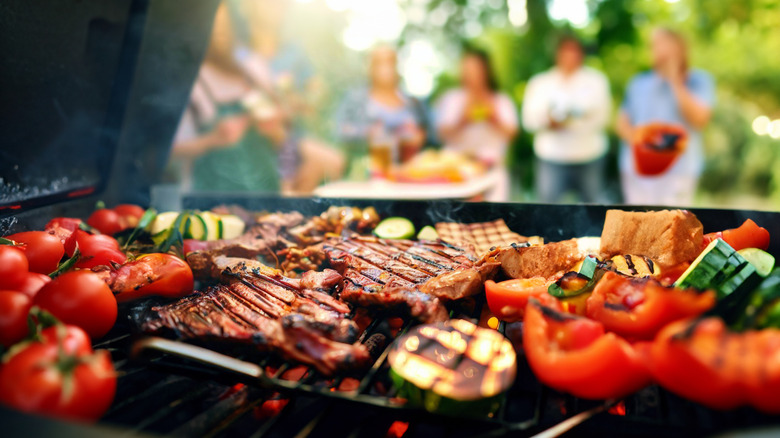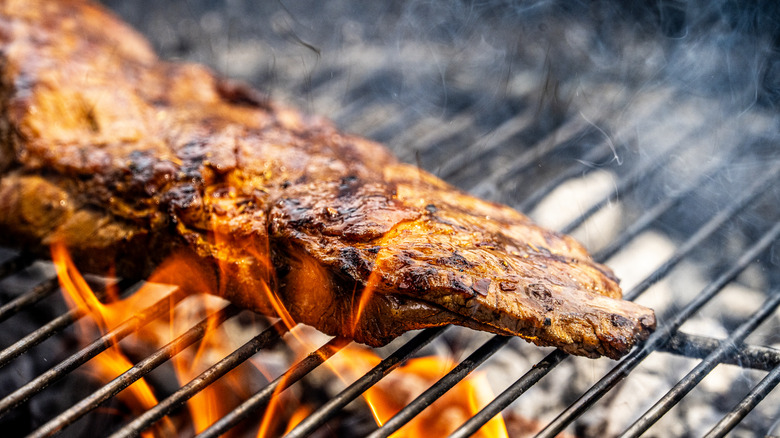How To Keep The Fire Going On Your Charcoal Grill For The Entire Cookout
Everyone loves the taste of smoky meat and fire-kissed vegetables straight off of a charcoal grill, but dealing with that fire is another matter. Getting your fire started is already frustrating enough, especially because you probably want to avoid lighter fluid when cooking on a grill. After plenty of time spent begging your coals to light and patiently waiting to see if they actually stay warm, you're confronted with the equally touchy task of keeping them hot. A few coals too many, and your ribs are going to turn out a little too similar to the coals they're sitting over. Step away for too long and, suddenly, you're looking at a dead grill and meat that's still raw on the inside. It's no wonder so many people opt for the convenience of gas.
But some of us just can't give up that charcoal flavor, so we reached out to an expert, private chef and Brazilian grill master Silvio Correa, to ask him how he keeps a fire going on different types of charcoal. Correa's top suggestion is setting up a two-zone fire, putting hot coals on one side of your grill and unlit coals on the other. According to Correa, "This allows you to add fresh coals gradually for a steady heat supply." Beyond managing your coals, a two-zone fire also creates distinct levels of heat around the grill, making it easy to move your food around depending on how hot you want it.
Fresh charcoal and good airflow are needed to keep your grill burning
Next up on the agenda is controlling the airflow of your charcoal grill. Correa says, "Adjust the vents to regulate airflow and temperature, adding more oxygen when needed to keep the fire alive." Most grills will have vents on both the bottom of the bowl, and on the lid. You can also keep the fire going by taking the lid off to feed the flames with oxygen, but you will lose the even heat that the lid traps. Keeping the lid off to kickstart your flame can be useful when you are making more fast cooking items, like burgers and boneless grilled chicken, but in general, using the vents on a closed grill is going to give you the most control over the heat.
The other thing to remember is that your fire needs a consistent supply of fuel, especially when you are grilling things like ribs and brisket that can take a long time. Correa recommends, "Every hour, add a handful of fresh charcoal to the hot side of the grill to maintain the temperature." That level should keep your coals fresh but not so hot as to overcook your food. Correa also reminded us to consistently monitor the temperature, even with hot coals, to make sure it's not getting too high or low. Sure, it can be a little hands-on, but some babysitting is worth it for that perfect grilled flavor.

